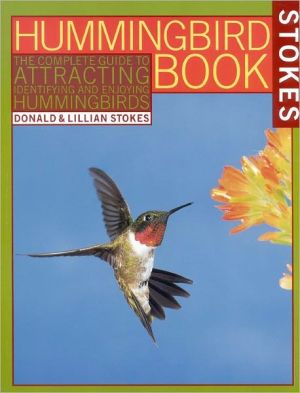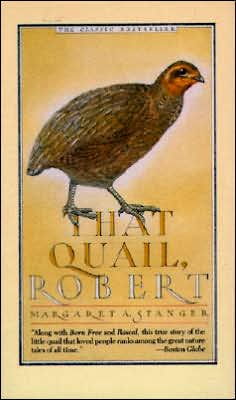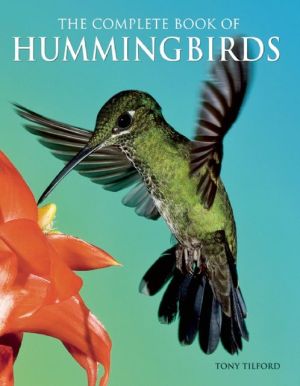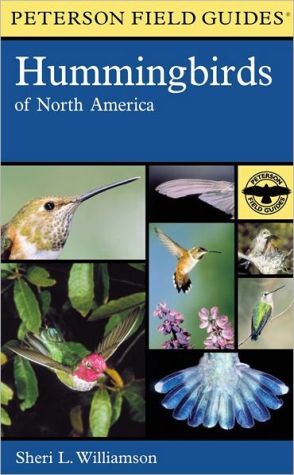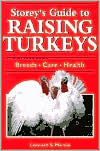Woodpeckers of North America
A comprehensive, profusely illustrated natural history of all 28 North American species of woodpeckers.\ The distinctive behavior and sound of woodpeckers make them easy to hear and interesting to watch. Woodpeckers of North America specifically covers all species of woodpeckers found in the United States, Canada and northern Mexico.\ Woodpeckers are renowned for their cavity-excavating abilities. Although trees and telephone poles are the choice of most woodpeckers, desert dwellers...
Search in google:
An examination of the biology and environment of all 28 species of the North American woodpecker and featuring 100 color photographs that show it in its natural habitat. Library Journal This attractive, authoritative book deals with all 28 species of woodpeckers found from central Mexico northward (i.e., North America in the faunal region sense). Backhouse, an environmental writer for periodicals like Audubon and New Scientist, is extremely knowledgeable about the biology and behavior of these popular birds and devotes chapters to such topics as anatomy, nesting, communication, reproduction and mortality, feeding habits, and relationships with other species. The remainder of her text is divided into species profiles that include an extensive introductory essay and address identification, distribution, habitat, voice, drumming and tapping sounds, feeding, breeding, migration, and conservation. The accompanying 70-plus color photographs are both abundant and of high quality, as are the detailed range maps. Backhouse has produced a worthy, popular complement to Arthur C. Bent's much more extensive Life Histories of North American Woodpeckers (featuring unique color paintings but a text originally written in 1939). Highly recommended. [A Discovery Channel Book Club selection.]-Henry T. Armistead, Free Lib. of Philadelphia Copyright 2005 Reed Business Information.
Excerpted from\ Chapter 1: What Is a Woodpecker?\ Woodpeckers are among the most ancient of all birds. A 25-million-sear-old fossil leg bone from Germany, a feather trapped in Caribbean amber that dates back an least 24 million years, and cavities in 40- to 50-million-year-old petrified wood from Arizona and Wyoming offer tantalizing clues as to when woodpeckers first diverged from their less specialized ancestors. The question of where this happened remains shrouded in mystery. The Americas, Asia and Africa have each been proposed by different experts as the home of the earliest woodpeckers. \ Today, members of the Picidae or woodpecker family (often referred to as picids) are found on every continent except Australia and Antarctica and inhabit many of the world's major islands, the most notable omissions being New Zealand, New Guinea, the Oceania island chain in the South Pacific, Hawaii,\ Madagascar, Greenland and Iceland. This large family is divided into three sub-families: the Jynginae or wrynecks. represented by two species; the Picumninae or piculets, with 31 species; and the Picinae, also known as the true woodpeckers, with 183 species. No wrynecks or piculets reside in North America.\ All of the true woodpeckers are hole-nesters with the ability to excavate their own cavities, generally in trees or tree substitutes such as columnar cacti or telephone poles. As a result, to a greater or lesser extent the Picinae subfamily has a number of distinctive morphological (structural) features: a long, stiff tail for bracing against tree trunks; short legs and long toes to assist in climbing vertical surfaces; a head built to withstand repeated hammering against hard surfaces; a long, straight bill designed for chopping into wood, removing bark or probing into crevices; a long, extensible tongue with a barbed end, able to reach deep into narrow openings and extract hidden prey; and nostrils covered with feathers to keep them free of wood debris. These attributes (described in more detail in Chapter 2) are displayed most completely by the most highly specialized tree excavators\ The first part of a species' scientific name indicates the genus (plural: genera) to which it belongs. The second part completes its unique species identification. Worldwide there are 24 genera within the Picinae subfamily. The true woodpeckers are represented by seven genera in North America -- Picoides, Melanerpes, Sphyrapicus, Colaptes, Piculus, Dryocopus and Campephilus -- which together include 28 species. Because members of the same genus are more closely related to each other than to other woodpeckers, they typically share certain physical characteristics, including body size and plumage patterns, as well as behavioral traits such as feeding habits.\ Woodpeckers that belong to the same genus often wear similar "sexual badges", the red (or in a few cases. yellow) head markings that differentiate adult males and females of most species. Only three North American woodpecker species -- the red-headed woodpecker, Lewis's woodpecker and the red-breasted sapsucker -- are sexually monochromatic, meaning that males and females cannot be distinguished by their plumage colors and patterns. All other North American woodpeckers are dichromatic, meaning that adult males and females have different plumage. Males of these latter species invariably display more conspicuous sexual badges than their female counterparts. The females may have no equivalent markings or their badges may be a smaller or less prominent version of the male's. Sexual size differences are not pronounced in most woodpecker species.\ The genus\ Picoides is the largest in North America, with nine species: the American three-toed, Arizona, black-backed, downy, hairy, ladder-backed, Nuttall's, red-cockaded and white-headed woodpeckers. Sometimes collectively referred to as pied woodpeckers because of their mixed black-and-white plumage (brown-and-white in the case of the Arizona woodpecker), these are small to medium-sized woodpeckers. Their sexual badges are red -- except for those of the American three-toed and black-backed woodpeckers, whose males sport yellow caps -- and are worn on the forehead, crown or nape. In this genus the males tend to be slightly heavier than females and have proportionally longer bills and shorter tails, though these differences are not generally obvious in the field. The Picoides woodpeckers have straight, chisel-tipped bills and are largely insectivorous.
Table of ContentsIntroduction What is a Woodpecker? Anatomy Communication Nesting Reproduction and Morality Feeding Habits Relationships With Other Species Woodpeckers and Humans Species ProfilesGlossary Bibliography Index Photo Credits
\ Birdbooker Report 82Two of the most helpful and interesting sections focus on the effects that human activities have on these birds, and the anatomy section contains information has probably escaped most birders.\ \ \ \ \ \ Library JournalThis attractive, authoritative book deals with all 28 species of woodpeckers found from central Mexico northward (i.e., North America in the faunal region sense). Backhouse, an environmental writer for periodicals like Audubon and New Scientist, is extremely knowledgeable about the biology and behavior of these popular birds and devotes chapters to such topics as anatomy, nesting, communication, reproduction and mortality, feeding habits, and relationships with other species. The remainder of her text is divided into species profiles that include an extensive introductory essay and address identification, distribution, habitat, voice, drumming and tapping sounds, feeding, breeding, migration, and conservation. The accompanying 70-plus color photographs are both abundant and of high quality, as are the detailed range maps. Backhouse has produced a worthy, popular complement to Arthur C. Bent's much more extensive Life Histories of North American Woodpeckers (featuring unique color paintings but a text originally written in 1939). Highly recommended. [A Discovery Channel Book Club selection.]-Henry T. Armistead, Free Lib. of Philadelphia Copyright 2005 Reed Business Information.\ \ \ BellaOnline\ - Connie Krochmal\ One of the most the most helpful and interesting chapters is on the effects human activities have on these birds.\ \ \ \ \ \ Ibis\ - David A. Christie\ A well-produced and attractive tome ... and one that is well worth reading.... [Backhouse's] text is scientifically well grounded.... Incorporates many snippets that the average reader would, I am sure, find both interesting and surprising. For that reason alone, this book can be recommended.\ \ \ \ \ \ Choice\ - T.C. Williams\ Informative text and superb photographs and drawings... nontechnical and engaging.\ \ \ \ \ \ Bloomsbury Review\ - Walter Larp\ An engaging and informational introduction, but has enough advanced detail to be a practical and expert guide for experienced ornithological fans... This is a thorough and enjoyable approach to the subject.\ \ \ \ \ \ Tampa Tribune\ - Kevin Walker\ Covers everything from nesting, feeding habits and social arrangements to just how the heck that head can stand repeated hammerings against trees.\ \ \ \ \ \ Main Courier-Gazette\ - Noreen O'Brien\ The intimate details of woodpeckers... filled with all the details Backhouse furnished in layman's terms and richly complemented with high quality-photographs of each species... the ultimate woodpecker reference book.\ \ \ \ \ \ Quarterly Review of Biology\ - John P. Roche\ An informative book that provides a worthwhile overview of woodpecker biology, as well as species profiles of the woodpeckers of the Nearctic. This volume is a useful introductory reference to the fascinating avian group as well as an enjoyable read.\ \ \ \ \ \ Baton Rouge Advocate [website]\ - Greg Langley\ Lots of information about woodpeckers... it's good stuff, but the best thing about this book is the beautiful color photos of the different woodpecker species. This superb reproduction quality has become a trademark of Firefly Books.\ \ \ \ \ \ Victoria Times-Colonist\ - Richard Watts\ Relates little details about woodpeckers that makes ordinary people react with pleasant surprise and want to read more... beautifully bound... lots and lots of full-color photographs.\ \ \ \ \ \ Olympia Olympian\ - Sharon Wootton\ Not only good information about and photographs of woodpeckers, but her anatomy section has information that probably escaped most birders.\ \ \ \ \ \ INFOLINK\ - Melissa Spatucci\ [A] beautifully written and illustrated book about woodpeckers. I would recommend this book for a high school or public library. The pictures, though small are close-ups of the various species of woodpeckers in their natural habitats. The artist's illustrations are very well done, too.\ \ \ \ \ \ BellaOnlineOne of the most the most helpful and interesting chapters is on the effects human activities have on these birds.\ — Connie Krochmal\ \ \ \ \ Wildlife ActivistBeautifully illustrated text... large color photographs of most species.\ \ \ \ \ \ IbisA well-produced and attractive tome ... and one that is well worth reading.... Recommended.\ — David A. Christie\ \ \ \ \ Bird TimesBrings together all the current scientific knowledge about North American woodpeckers.\ \ \ \ \ \ ChoiceInformative text and superb photographs and drawings... nontechnical and engaging.\ — T.C. Williams\ \ \ \ \ Bloomsbury ReviewEngaging and informational introduction, but has enough advanced detail to be a practical and expert guide for experienced ornithological fans.\ — Walter Larp\ \ \ \ \ Tampa TribuneCovers everything from nesting, feeding habits and social arrangements to just how the heck that head can stand repeated hammerings.\ — Kevin Walker\ \ \ \ \ Main Courier-GazetteThe intimate details of woodpeckers... the ultimate woodpecker reference book.\ — Noreen O'Brien\ \ \ \ \ Quarterly Review of BiologyInformative book... This volume is a useful introductory reference to the fascinating avian group as well as an enjoyable read.\ — John P. Roche\ \ \ \ \ Baton Rouge Advocate [website]The best thing about this book is the beautiful color photos of the different woodpecker species.\ — Greg Langley\ \ \ \ \ Victoria Times-ColonistDetails about woodpeckers that makes ordinary people react with pleasant surprise... lots and lots of full-color photographs.\ — Richard Watts\ \ \ \ \ Nature Society NewsBrings together all the current scientific knowledge about North American woodpeckers... a must for birders.\ \ \ \ \ \ The Whitehorse StarThese are lavishly illustrated, beautifully designed volumes. [reviewed with Owls of North America]\ — Dan Davidson\ \ \ \ \ Globe and MailThis gorgeous book is packed with fascinating information and lovely color photographs.\ \ \ \ \ \ INFOLINKBeautifully written and illustrated.\ — Melissa Spatucci\ \ \ \ \ Olympia OlympianNot only good information about and photographs of woodpeckers, but her anatomy section has information that probably escaped most birders.\ — Sharon Wootton\ \ \ \ \ International HawkwatcherExcellent insight into woodpeckers... birders and ornithologists, nature photographers and others interested in woodpeckers will welcome having this informative book.\ \ \ \ \ \ The Whitehorse Star\ - Dan Davidson\ These are lavishly illustrated, beautifully designed volumes in which Backhouse not only provides information about different species but also shows how they fit into their ecosystems and how they relate to humans. (reviewed with Owls of North America)\ \ \

